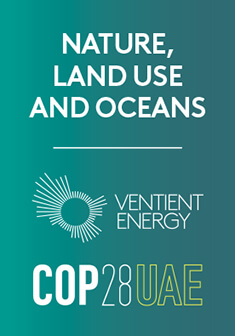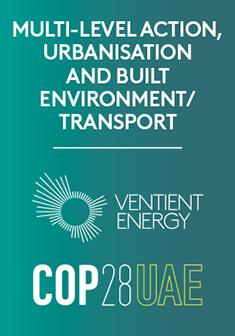Last week we saw COP28 come to a close, and, as President Sultan Ahmed Al Jaber dropped the final hammer of the conference, it’s fair to say there were some mixed emotions regarding the outcome. Over the last 8 weeks, we have been following the build-up of the conference by highlighting the key themes that were to be discussed at this year’s event. Now that the conference has closed and the desert dust has settled, we can take stock of what happened in Dubai.
So much happened over the two weeks that it would be impossible to capture all of it here. This article will instead look to summarise the key outcomes and provide the necessary context to understand the results and relative implications of the 28th Conference of the Parties.
Was COP28 a success?
We have previously asked the question of what needed to happen at this COP for it to be deemed a ‘success’. In truth, this is such a subjective and difficult assessment to make because it depends entirely on what lens you are looking through. As we discussed in our series of articles, the impacts of climate change are not ubiquitous, nor are the resources, technology or finance required to deal with them. The result of this means that coming to a universal agreement between all 200 countries participating in the negotiations is, well, challenging.
Like most COPs before it, COP28 produced many positive outcomes, but also left some noticeable gaps. It was a polarising event with many critics, but many argue that significant progress has still been made. So, what actually happened?
A total of 10 major pledges were agreed at the conference as well as several key announcements and developments across its duration. Below we break down some of the most notable:
Loss and Damage Fund
- Day 1 of the conference saw several countries, including the UAE, UK, US and the EU agree to launch the long-awaited Loss and Damage Fund.
- $420m was pledged on the first day to help vulnerable countries pay for the damage caused by climate-related events.
COP27 saw the establishment of the Loss and Damage Fund, however it lacked clarity on funding sources, allocation strategies and eligibility criteria. The developments at COP28 are a significant step in mobilising climate finance and providing the much-needed support to vulnerable countries around the world. Though this represents progress, the funding still falls significantly short of the estimated $290bn – $580bn a year required for vulnerable countries in the South between now and 2030. More detail on the Loss and Damage Fund and other climate finance announcements can be found here.
Global Renewables and Energy Efficiency Pledge
- 123 countries, including the UK, committed to triple the world’s installed renewable energy generation capacity to at least 11,000 GW by 2030.
- There was a commitment to double the global average annual rate of energy efficiency improvements from around 2% to over 4% every year until 2030.
- Agreement to put the principle of energy efficiency as the “first fuel” at the core of policymaking, planning, and major investment decisions.
The above commitments take into consideration different starting points and national circumstances of the countries involved. This is the first time renewable energy has taken centre stage at a COP as a critical component to fighting climate change. This is a hugely positive announcement, and one that Ventient Energy fully supports. As always, however, the devil will be in the detail, and how this takes shape in reality only time will tell. More detail on this can be found here.
The Global Stocktake
- It was the first time that countries came together to publish the Global Stocktake.
- Major gaps and shortfalls were identified in our efforts to limit warming to well below 2°C and it highlighted the need to accelerate our efforts and be more ambitious with our actions.
The Global Stocktake is an assessment of the progress made so far in curbing global warming and limiting temperature rises to well below 2°C in line with the Paris Agreement. It is essentially a sense check of where things are, relative to where they should be, and is used to inform and update countries’ Nationally Determined Contributions (NDCs) – the plans set out to align with the Paris Agreement.
Importantly, the final Global Stocktake text more strongly “called on” nations to take a variety of actions to reduce emissions. This included the acceleration of zero and low emission technologies such as renewables, nuclear, and abatement through energy efficiency. It also highlighted that nations should scale low carbon hydrogen production and deploy carbon capture and utilisation in hard-to-abate sectors.
It recognised, significantly, that global emissions must peak by 2025 and stated that nations must meet their goals by “accelerating and substantially reducing non-CO2 emissions globally, including in particular methane emissions by 2030.”
Fossil Fuels
- Several key pieces of text were included in the final agreement including efforts towards the ‘phase down’ of unabated coal power.
- The text included the recognition that we need to “transition away from fossil fuels in energy systems in a just, orderly and equitable manner in this critical decade to enable the world to reach net zero emissions by 2050, in keeping with the science.”
The wording around fossil fuels in the final COP text was, to say the least, contested. It was a key focal point of the conference with many asking the question – could a Petrostate Presidency deliver what many people were calling for – the unambiguous ‘phase out’ of fossil fuels. The short answer is no. But this is the first time that ‘fossil fuels’ have been explicitly mentioned in any COP text, which, it can be argued, is indeed a positive step forward.
The text is, however, littered with loopholes, with many arguing that it lacks the ambition and conviction required to redirect our course back on track to 1.5°C. Indeed, although fossil fuels are mentioned, the term is only used in relation to ‘energy systems’. Regarding coal power, the text was weakened from “rapidly phasing down unabated coal” in the first draft to the eventual “efforts towards the phase-down of coal power” – a small difference but one that can send very different signals. When acting on behalf of 200 countries with varied economies, vulnerabilities and protection capabilities – this text was always going to be divisive, and it again proved a key talking point of the conference.
Other Notable Announcements and Developments
- Text on accelerating the reduction of emissions from road transport through infrastructure developments and the rapid deployment of zero-emission vehicles.
- Focus on vulnerable communities, in particular youth and woman in developing countries, with a new Climate Action Account launched under the UN’s Central Emergency Response Fund to finance humanitarian responses to climate-related disasters.
- The ‘just transition’ was an important focus in the Global Stocktake, Global Goal on Adaptation, climate finance, and implementation agreements.
- Nature was mentioned directly in the Global Goal on Adaptation, which spoke of “accelerating the use of ecosystem-based adaptation and nature-based solutions,” and there is growing recognition that climate goals demand nature-positivity.
Over the course of COP28, there were hundreds of developments, and many positive outcomes. There were too, however, many occasions where commitments and pledges fell short of the expectations of delegates and attendees both present and watching on from afar. “We will not sign our death certificate,” declared Samoan Natural Resources and Environment Minister Cedric Shuster, in reaction to the final wording on fossil fuels.
In terms of adaptation, there is more text than in previous drafts, but the consensus seems to be that there is still a lack of clarity on timebound objectives and the wording in the final agreement remains weak. This again raises justified concerns from representatives from the global South who are the most in need of tangible adaptation measures.
There was also a disappointing lack of progress on carbon markets, with countries failing to agree on key rules to trade offsets bilaterally and to kickstart a long-awaited global UN-sanctioned market. Other key topics such as food and nature were somewhat sidelined by the attention on the fossil fuel wording, leading to a lack of any significant developments in those areas.
Conclusion
When the UAE was announced as the host of COP28, questions were immediately asked about the potential conflict of interest. Can a major oil and gas producer really host the conference at such a pivotal point in time? In that sense, this COP was arguably always fighting an uphill battle to be considered a success. But like mentioned previously, what does ‘success’ actually mean? The real answer is that it depends on who you ask.
Many people have called this COP the beginning of the end of the fossil fuel era, whilst others claim it is not even close to that. Indeed, the wording in the final text is loose, and still enables parties to continue fossil fuel production, but explicitly mentioning the need to transition away from fossil fuels on a global scale, signifies an indisputable step in the right direction, no matter how small that step might be.
Ultimately, we are now approaching the midpoint of this ‘critical decade for action’ and we have yet to really see the transformative change required. Depending on how you view it, COP28 can be deemed a success. But no matter what your perspective is, there is still so much more to be done. The tripling of renewable energy capacity and the other technology announcements are welcomed, and it is now our responsibility as an industry to help deliver that goal.
To unlock this potential, we need supportive regulatory environments, efficient planning and permitting processes and the finance to make it happen. COP29 will once again be a crucial forum to discuss these topics, build on the COP28 outcomes and deliver on our goals to stop climate change. The objective remains – half global emissions by 2030 to stay on track. Time to get to work.
Ed Flanders
Climate Impact Lead


More articles


Nature, Land Use & Oceans
We are facing an ecological “polycrisis” The 2023 Global Risk Report[i] published by the World Economic Forum warns that the world is hurtling towards an era of “polycrises”, meaning multiple interconnected crises happening at the same…


Multilevel Action, Urbanisation and Built Environment, Transport
“Today, 55% of the world’s population lives in urban areas, a proportion that is expected to increase to 68% by 2050”. The UN. This increase, known as ‘urbanisation’ brings with it a series of challenges as we grapple with increasing…


